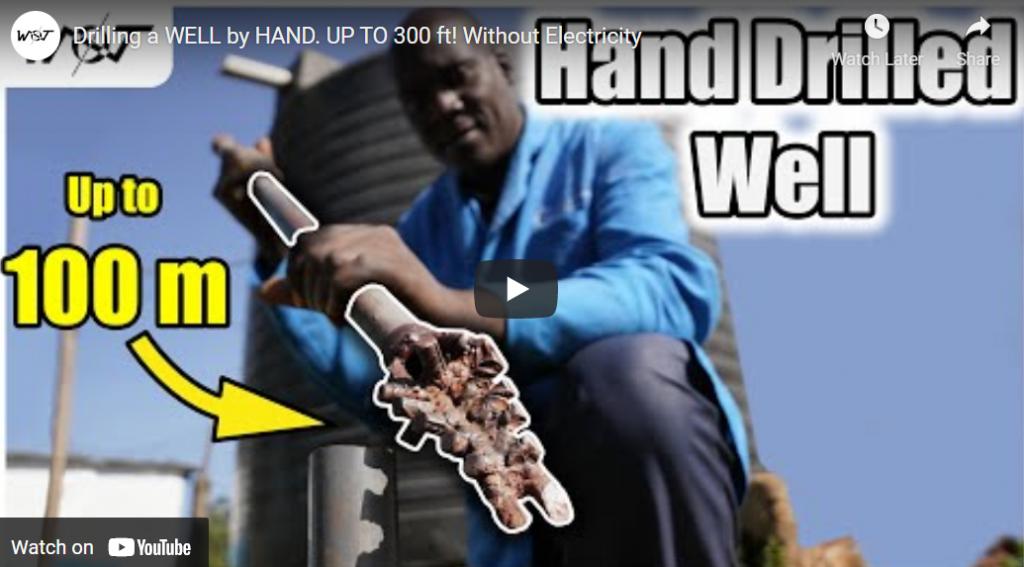During the recent training in Kenya, jointly organised by EMAS International and the SMART Centre Group EMAS drilling was introduced at the Aqua Clara Centre.
EMAS drilling is a low-cost drilling method, capable of drilling wells of up to 80 meters in relatively soft soils.
A team from the WOT in Enschede was present and develop a video tutorial of the EMAS Drilling Technology. The video is now available on the Youtube-channel of the WOT and has already attracted over 160.000 views!

Background to EMAS Drilling (source: Akvopedia)
The EMAS method of manual drilling is a hybrid between Jetting, percussion, and rotary drilling. A manually powered mud pump is used, and the drill stem is turned through 90 degrees at the end of each stroke. It permits to drill through all kinds of loose soils, as well as consolidated materials and light rock. It will not, however, penetrate hard original rock or boulders (e.g. ancient river beds underground). The usual diameter of the tube well is 37 mm.
The EMAS drilling method was developed by the Escuela Móvil de Agua y Saneamiento (Mobile School for Water and Sanitation, EMAS) in Bolivia. Project leader of EMAS in Bolivia is Wolfgang Eligius Buchner, born 1957 in Holzkirchen bei München.
EMAS was established in 1993, and has provided training for about 130 independent well builders in its branches in San Julian (1994) and in Puerto Pérez (1997). 20 students have been able to graduate from the licensed craftsman course. The well builders in Bolivia have founded a well builder organization.
During a three-month education, agricultural workers are trained to independently drill wells, build sanitary installations and market their skills in their local area depending on demand. The need for large financial investments for well drilling and the building of line systems has traditionally prohibited the construction of large scale potable water systems in rural areas. Wolfgang Buchner adapted already accepted suction – and rinsing drilling methods to local conditions.
EMAS is not only the name of the mobile school for water and sanitation, but also a whole technical and social concept of water and sanitation which includes rain water harvesting, solar water heaters, windpower, hydraulic rams, water treatment, small tanks and sinks, a variety of hand and foot pumps, and ferrocement tanks.
For a general introduction to the EMAS Technologies check the video below:
